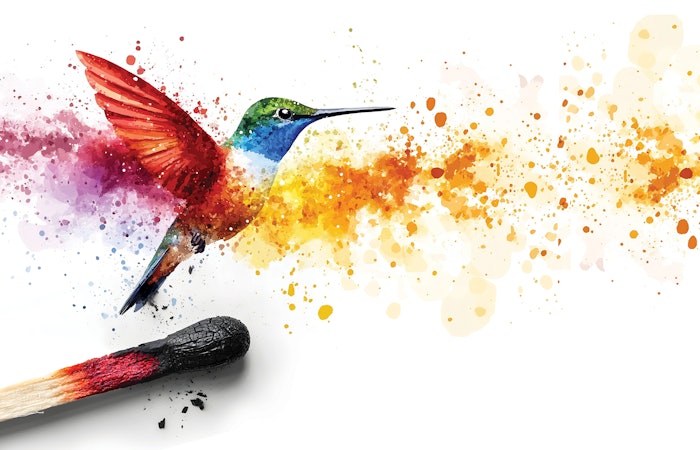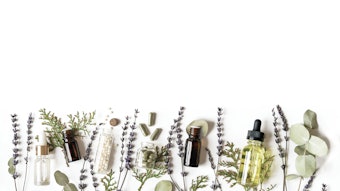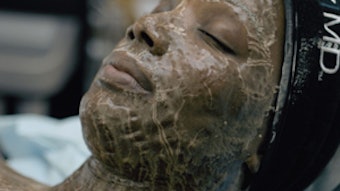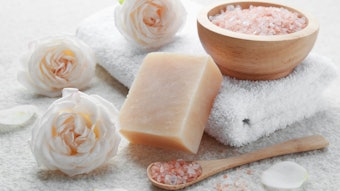
My journey to burnout began long before I started experiencing the symptoms of fatigue, anxiety and physical illness.
This article is only available to registered users.
Log In to View the Full Article
My journey to burnout began long before I started experiencing the symptoms of fatigue, anxiety and physical illness.
I grew up as a child of Asian immigrants in the ‘80s and ‘90s where praise and recognition came with achievement. So, I achieved.
After my time on Wall Street with some of the most reputable banks in the world, my career became the primary source of my identity. My aim was to become a highly respected corporate executive leveraging the vast wisdom of my professional and personal experience—all while having a full, fantastic family life.
Fast forward fifteen years and my life seemed perfect: a well-paying job, a husband whom I respected as my equal and four beautiful children who were the greatest source of joy in my life. I wasn't just holding it together, I was thriving.
What I didn’t see was that the thrill of my career was slowly starting to take a back seat to my family life. Resistant, I wouldn’t dare admit out loud that my job was less important. I thought it would brand me as less committed to my work. I had to do it all, perfectly.
Around this time I started to experience a different kind of stress. Not the adrenaline kind of stress that comes from performing with great skill in the face of a challenge (eustress), but the type that comes from fear, the fear that I wouldn’t be good enough to have the life I had dreamed for myself.
To make my long story short, I checked out from my feelings and dug my heels in even more. I was determined not to relinquish what I had set out to do as a young, single woman in her twenties. This not only resulted in poorer decision-making regarding my well-being, but I was sacrificing relationships — my children, my husband, my non-work friends.
Physical symptoms appeared. I ignored them. Finally, I ended up in the emergency room with an infection because I waited until the pain became unbearable. That wasn’t even the breaking point. Once recovered, I got back to working 16-hour days, taking breaks for family dinner and parenting duties, then going back to work until well after midnight, still not feeling like I was doing enough to earn my place at work.
Call it the universe or divine intervention, but a few months later my position was eliminated during a restructuring. I thought my life was over.
Truth? It was just beginning.
Through what I’m about to share with you, I discovered what really matters to me. It wasn’t an instant light-bulb moment. It took years of working on myself and becoming comfortable with the idea that I had gotten some things wrong.
I easily challenged the status quo at work to great success with innovation, but I had never done it with myself.
I’ve always found it hard to say what has made the difference in adding to the joy, purpose and meaning in my life both professionally and personally. The best way I’ve come up with to communicate my new approach to life is this: BLISS.
While a life of bliss may sound like a hashtag trending on TikTok, I’m talking about something that goes deeper. Yes, bliss is the intention, but it is also the basis of a self-care framework for what I believe makes for a life of true bliss, a deep and meaningful experience of happiness and joy.
I’ve never been more satisfied with my life than I am today. It’s not perfect, but it’s perfect for ME.
Let’s walk through it.
The Bliss Framework
- Breathe
- Loosen the Grip
- (I) Language
- Slow Down
- Seek Joy/Pleasure/Fun
These are the pillars of BLISS that have been working for me since I committed to my recovery from perfectionism.
Breathe
Breathing is something we take for granted but instinctively know is the essence of life. Without the breath, we don’t physically exist.
My new relationship with the breath started with yoga and over time I learned breathing techniques for managing stress and the impact of asthma on my daily life.
Law enforcement uses box breathing (a four-count practice of inhale, hold, exhale, hold) in the field. Practices like the 4-7-8 technique can induce a sense of clarity and calm.
I highly recommend James Nestor’s book Breath as a primer. He spent years researching the subject with pioneering scientists in the field.
Loosen the Grip
Let it go? Completely intimidating! So, I set a lower bar and took the first step.
Control was my core desire. I asked myself:
- What do I want to control?
- Why do I want to control it?
Taking an honest look at why was crucial. I explored this with a therapist, support communities and journaling.
The humility of a spiritual practice also helped loosen my grip on control. Connecting to something greater than my own willpower was essential for transformation. I noticed miracles daily once I did this.
This step aligned me with my values and helped to prioritize my energy so I could delegate the rest.
(I) Language
I found that my language strongly influences my mindset and relationships.
Using “I” language seemed simple, but was initially challenging. I was accustomed to using “you” to describe situations when I meant “I”.
“I” language helped me take greater responsibility for my thoughts and feelings through word choices that more accurately communicated my first-hand experience as my own versus a generalized experience that was common to all.
This clarity improved my leadership by enabling me to communicate priorities, listen more empathetically and delegate clearly.
Slow Down
My approach to slowing down involves meditation, mindfulness and rest.
I first learned meditation with a mantra, finding it a powerful way to rest my mind. As someone constantly striving for goals, I experienced a serenity I never imagined.
Mindfulness deepened my self-awareness and helped me to be more present in the moment with my emotions, thoughts and beliefs. Today, I can catch unhealthy patterns more quickly, often avoiding a repeat of the choices that led to burnout.
Rest remains challenging. I sometimes still fall into the trap of believing busyness equals productivity.
When self-doubt creeps in, I use the mantra: “rest is an action.” Some of my best ideas have come during moments of doing nothing.
Seek Joy/Pleasure/Fun
With all this deep inner work, I had to remember that life isn’t about being serious all the time. Joy and fun can feed our souls too!
I learned that I didn’t have to wait to “earn” pleasure or fun activities as a reward.
Making time for fun was just as important as the other parts of BLISS.
Giving myself permission to take time for myself was a huge test of my ego. Mentally, I resisted. Scheduling one night a week as “Gerri’s Night Out” forced me to make plans and consider what would be nourishing and fun for me—just me—each week.
By experimenting, I learned what truly served me personally as self-care, what didn’t and what best supported me in the context of my life during the week.
The unintended happy by-product of all this inner work? I brought the energy of fun to work with me. There is nothing like the shared experience of fun to build bonds of trust in the workplace. Happier people make for happier workplaces.
So, there you have it. How BLISS begets bliss.
It’s the framework I’ve created to lead my personal version of a blissful life. In addition to regular exercise and supportive nutrition, it’s the toolkit I use daily to nurture a truly happy life. May it serve you in the same.










